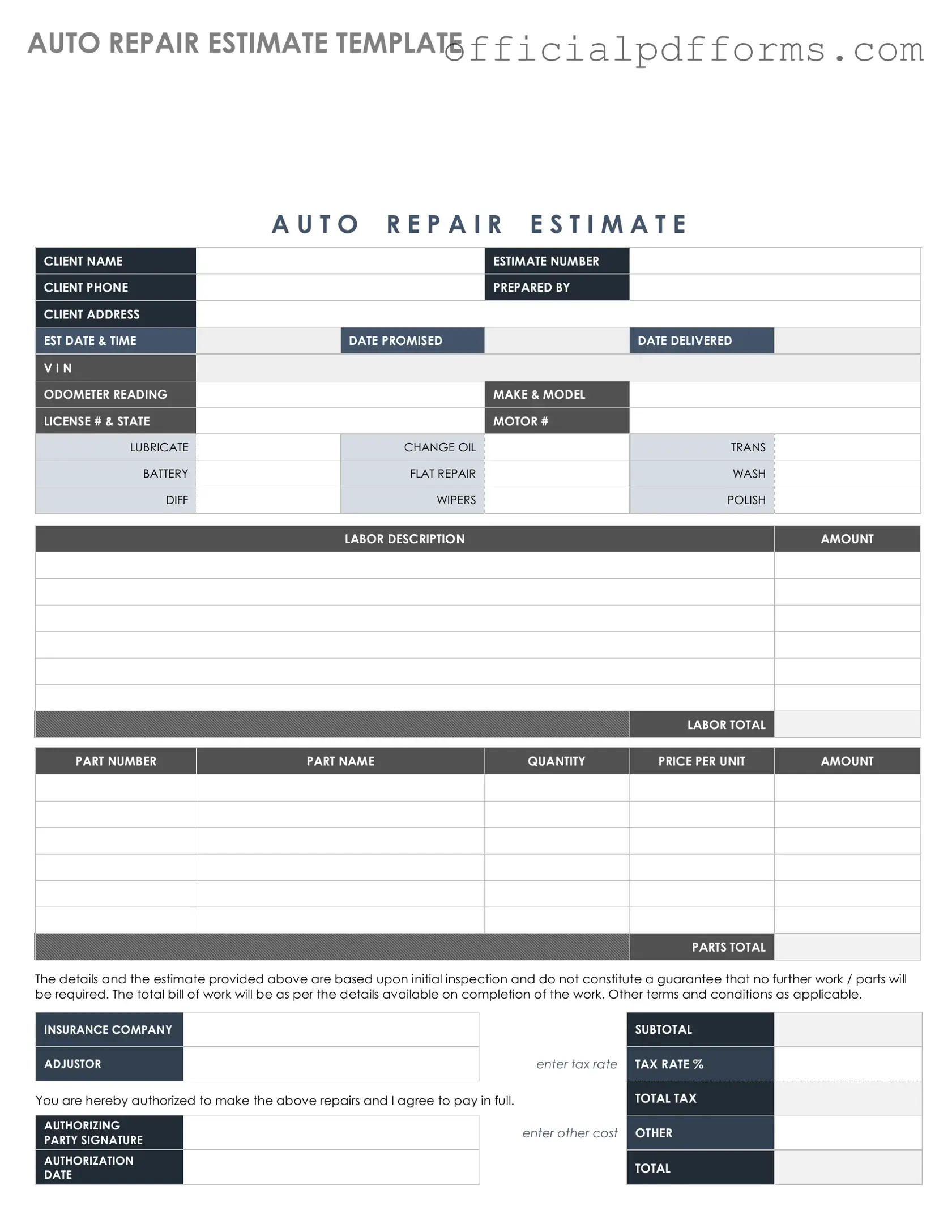An Auto Repair Estimate form is a document that outlines the anticipated costs associated with repairing a vehicle. It provides a detailed breakdown of the necessary repairs, parts, labor costs, and any additional fees. This form serves as a crucial tool for both customers and auto repair shops, ensuring transparency and helping customers make informed decisions about their vehicle maintenance.
Why should I request an Auto Repair Estimate?
Requesting an Auto Repair Estimate is essential for several reasons:
-
Budgeting:
It helps you understand the financial implications of the repairs needed.
-
Comparison:
You can compare estimates from different repair shops to ensure you are getting a fair price.
-
Transparency:
A detailed estimate allows you to see exactly what you are paying for, reducing the likelihood of unexpected charges.
An Auto Repair Estimate generally includes the following information:
-
Customer Information:
Name, contact details, and vehicle information.
-
Repair Details:
A list of repairs needed, including parts and labor.
-
Cost Breakdown:
Individual costs for parts, labor, and any additional fees.
-
Time Estimate:
An estimated timeline for completing the repairs.
-
Terms and Conditions:
Any warranties or guarantees related to the repairs.
How accurate are the estimates provided?
While auto repair estimates aim to be as accurate as possible, they are often based on the information available at the time of inspection. Factors such as hidden damages or additional repairs that may be discovered during the repair process can affect the final cost. It is advisable to discuss any potential variables with the repair shop to gain a clearer understanding of how the estimate might change.
Can I negotiate the estimate?
Yes, negotiating an estimate is not uncommon. If you receive multiple estimates from different shops, you can use them to discuss pricing with your preferred shop. Additionally, if you have a budget in mind, communicate this to the repair shop. They may be able to adjust the scope of work or offer alternative solutions that fit your financial needs.
Is an Auto Repair Estimate legally binding?
Generally, an Auto Repair Estimate is not legally binding unless it is explicitly stated in the terms and conditions. It serves primarily as a guideline for expected costs. However, once you authorize the repairs, the shop is typically obligated to complete the work as outlined in the estimate. Always read the fine print and clarify any uncertainties with the repair shop before proceeding.
